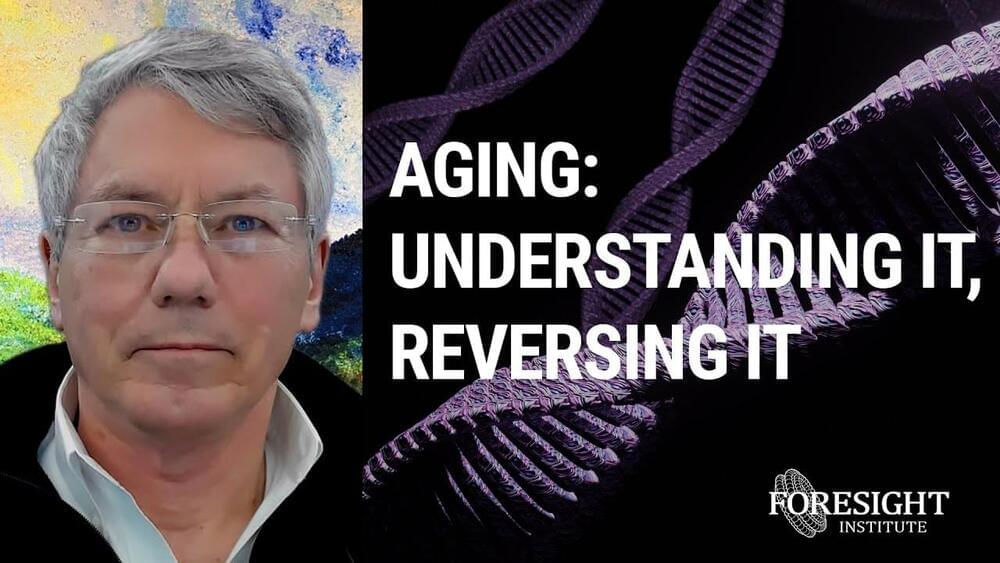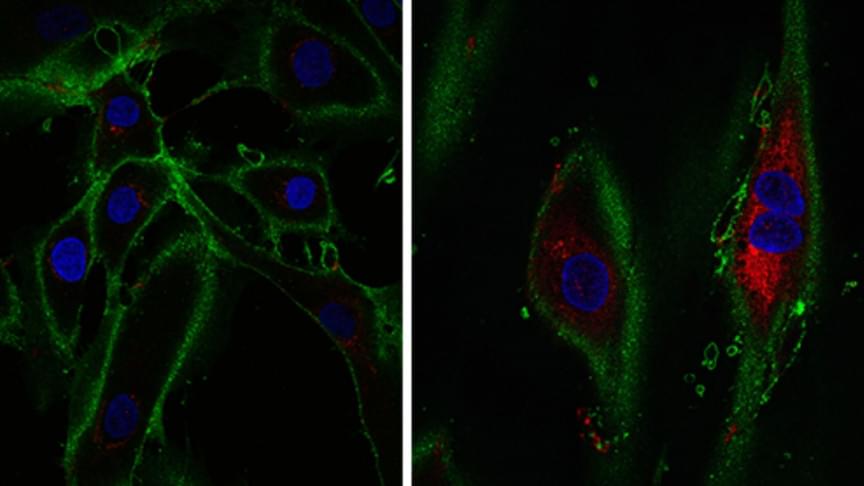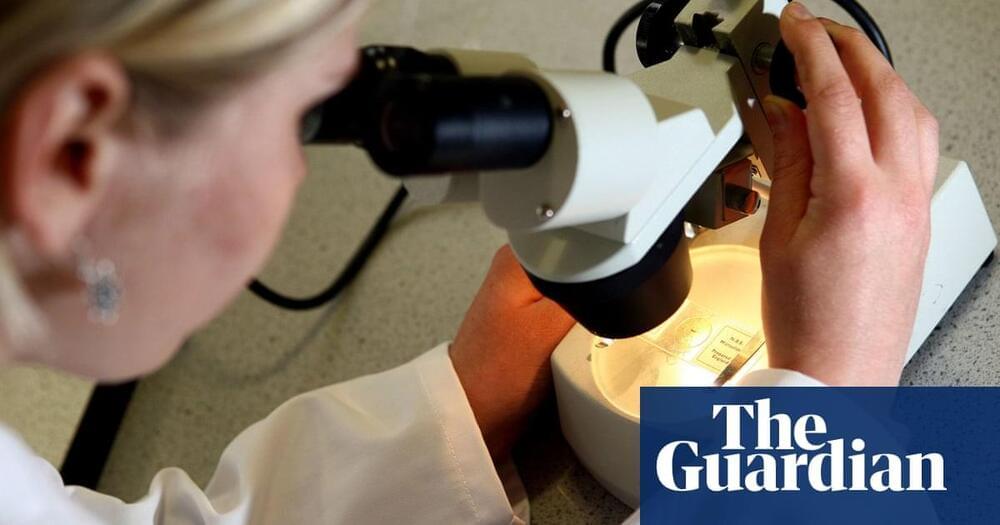Archive for the ‘life extension’ category: Page 196
Apr 8, 2022
Reversal of time? Scientists de-age human skin cells by 30 years in trial
Posted by Paul Battista in categories: biotech/medical, life extension
In a new trial conducted by the University of Cambridge, scientists were successfully able to de-age human skin cells by 30 years.
With age, the ability of cells to function properly declines. As a result, the NDA blueprint of people starts to accumulate signs of aging.
Researchers have used regenerative biology to create ‘’induced’’ stem cells and produce fibroblasts that generates collagens that heal wounds and provide structure to tissues.
Apr 8, 2022
New anti-aging research enables human cells to “time jump” 30 years
Posted by Gemechu Taye in categories: biotech/medical, life extension
A team of researchers have found a way to “time jump” cells back 30 years. A team of researchers at the Babraham Institute, a partner organization of the University of Cambridge, UK, have made a breakthrough in regenerative medicine. Just published in the journal eLife, the team shows how they managed to turn back the clock 30 years for human skin cells.
A new regenerative medicine technique has been developed that can make old human cells 30 years younger without losing specialization.
Apr 8, 2022
Michael Fossel | Aging: Understanding it, Reversing it
Posted by Montie Adkins in categories: biotech/medical, computing, life extension, nanotechnology, neuroscience

Dr Fossel talking about dementia, telomeres, and clarifying some experimental myths.
Foresight Biotech & Health Extension Meeting sponsored by 100 Plus Capital.
Program & apply to join: https://foresight.org/biotech-health-extension-program/
Continue reading “Michael Fossel | Aging: Understanding it, Reversing it” »
Apr 8, 2022
Humans could live up to 150 years, new study claims
Posted by Paul Battista in categories: biotech/medical, internet, life extension
Humans could live until the ripe old age of 150 years according to recent research – and scientists are racing to work out how.
Harvard geniuses, biohackers and internet billionaires are all looking for ways that humans can crack the code on aging.
WaitButWhy blogger Tim Urban writes “the human body seems programmed to shut itself down somewhere around the century mark, if it hasn’t already”.
Apr 8, 2022
“Time jump” anti-aging method gives specialized cells a 30-year refresh
Posted by Dan Kummer in categories: biotech/medical, life extension, neuroscience
Through experimentation with a highly promising anti-aging technique, scientists at the UK’s Babraham Institute have demonstrated a new way of turning back the clock in human skin cells. These cells functioned like cells 30 years younger, but in what represents an exciting advance in the field, were able to still retain some of their specialized functions acquired through age.
In 2012, Japanese researcher Shinya Yamanaka earned a Nobel Prize for his work in developing what are known as induced pluripotent stem cells (iPSCs). These start out as regular adult tissue cells that are harvested and exposed to four molecules called Yamanaka factors, which return them to an immature state. From here, the stem cells can theoretically develop into any cell type in the body.
We’ve seen scientists explore this potential in a number of exciting ways, implanting them in rabbits to restore vision, addressing dopamine deficiencies in animal models of Parkinson’s disease and repairing damaged heart muscles in pigs. The full reprogramming process involves subjecting the cells to the Yamanaka factors for around 50 days, but the Babraham scientists have found that shortening this process might bring some significant benefits to the table.
Apr 8, 2022
“Time Jump” by 30 Years: Old Skins Cells Reprogrammed To Regain Youthful Function
Posted by Kelvin Dafiaghor in categories: biotech/medical, genetics, life extension

Findings could lead to targeted approach for treating aging.
Research from the Babraham Institute has developed a method to ‘time jump’ human skin cells by 30 years, turning back the aging clock for cells without losing their specialized function. Work by researchers in the Institute’s Epigenetics research program has been able to partly restore the function of older cells, as well as rejuvenating the molecular measures of biological age. The research is published today (April 7, 2022) in the journal eLife and whilst at an early stage of exploration, it could revolutionize regenerative medicine.
Apr 8, 2022
Advocacy group’s advisory board members defect over Biogen Alzheimer’s drug
Posted by Kelvin Dafiaghor in categories: biotech/medical, life extension, neuroscience
The furious debate over Aduhelm has now sparked controversy over the Alliance for Aging Research, which has seen half of its scientific advisory board members resign.
Apr 7, 2022
Scientists make further inroads into reversing ageing process of cells
Posted by Dan Kummer in categories: biotech/medical, life extension
People could eventually be able to turn the clock back on the cell-ageing process by 30 years, according to researchers who have developed a technique for reprogramming skin cells to behave as if they are much younger.
Research from the Babraham Institute, which is affiliated to the University of Cambridge, could lead to the development of techniques that will stave off the diseases of old age by restoring the function of older cells and reducing their biological age.
Apr 7, 2022
No air currents required: Ballooning spiders rely on electric fields to generate lift
Posted by Quinn Sena in categories: computing, information science, life extension, mathematics, physics
In 1,832, Charles Darwin witnessed hundreds of ballooning spiders landing on the HMS Beagle while some 60 miles offshore. Ballooning is a phenomenon that’s been known since at least the days of Aristotle—and immortalized in E.B. White’s children’s classic Charlotte’s Web—but scientists have only recently made progress in gaining a better understanding of its underlying physics.
Now, physicists have developed a new mathematical model incorporating all the various forces at play as well as the effects of multiple threads, according to a recent paper published in the journal Physical Review E. Authors M. Khalid Jawed (UCLA) and Charbel Habchi (Notre Dame University-Louaize) based their new model on a computer graphics algorithm used to model fur and hair in such blockbuster films as The Hobbit and Planet of the Apes. The work could one day contribute to the design of new types of ballooning sensors for explorations of the atmosphere.
There are competing hypotheses for how ballooning spiders are able to float off into the air. For instance, one proposal posits that, as the air warms with the rising sun, the silk threads the spiders emit to spin their “parachutes” catch the rising convection currents (the updraft) that are caused by thermal gradients. A second hypothesis holds that the threads have a static electric charge that interacts with the weak vertical electric field in the atmosphere.
















